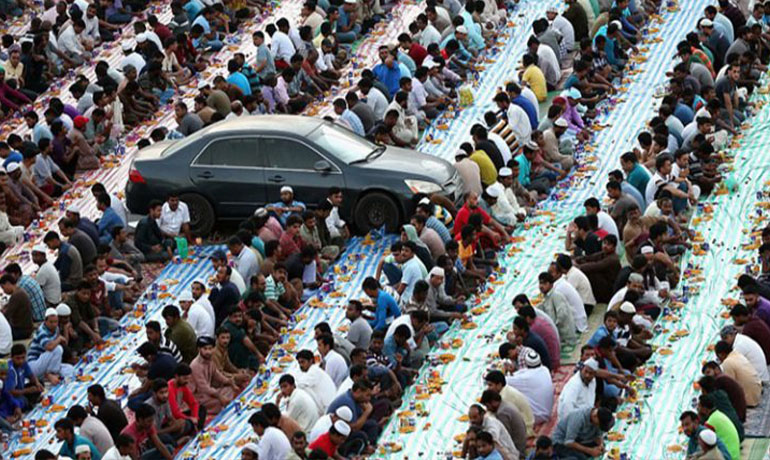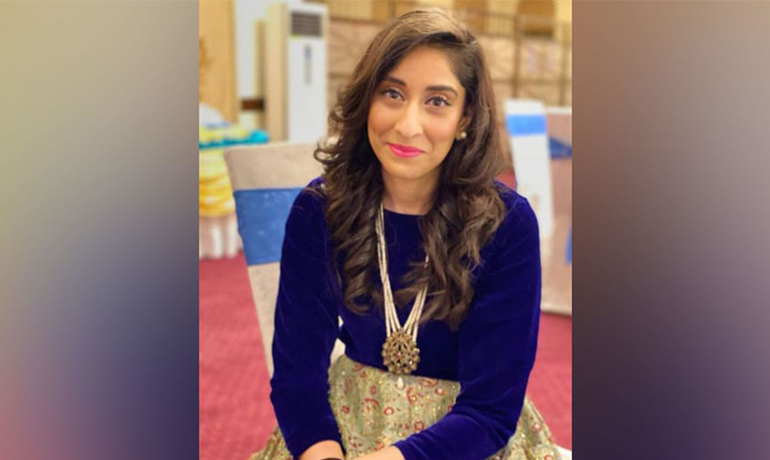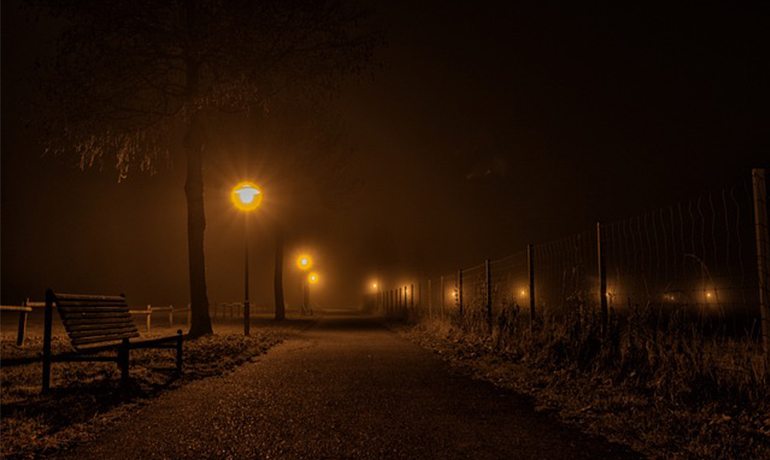I remember my grandmother setting the long table for 9 (me on a side chair), with dates, pakoras (fried batter, potatoes and onions) and not to miss the mouth-watering hot jalebis. Past the dahi bhallay, over the perfectly cut fruit, right at either end of the table there were various syrups of choice to be had (or gulped down). A red one would stand its test in time in the corner next to a jug of juice, while I went for lassi, imitating my father’s choice. I remember thinking as a child if I eat everything dutifully – how many jalebis could I get hold of as a promised prize. The fight was lost with parental units supervision – but that’s where a grandmother could come in to happily sneak you some more. The tussle amongst siblings would be over fries. The adults would run back after their prayers to fill up their plates some more of the yogurt, fruit and chick-peas mix. Looking back, I do realize this full table spread was a feast for a child and I do realize now how blessed we were.
In the year 2019 I do recognize and understand more than ever before that health requirements and traditional iftar do not go together. Traditional iftar food does not address today’s dietary needs. Catering to healthier eating options does not, unfortunately, include deep fried stuff. People have changed what is on their iftar table (for practical purposes which is a necessity). Some of us live abroad, we have work that keeps us away from a table set for iftar. Many of us break our fast during office hours. Still, somethings remain intact, including the cultural traditions associated with the onset of this month. I find myself smiling, when my mother cannot seem to forego her staple red syrup, sometimes added to milk, later in the night. In her mind, she gives up on the jalebis and pakoras in order to balance it out a bit. I tell her about that sugar rush it brings but she’s had this every year for more than 30 years and is not about to let go.
The familiarity and the fraternity that comes with this month opens doors for extended hospitality, charity and of course that which brings us together. The beauty of the month is not lost even for those who are not fasting. This is supposed to be a time of peace
My first choice has always been to break the fast with water. I’d like to claim that I have perfected the art of not gulping it down but to be honest I haven’t. The proper way would be to take it down in three portions, slowly. Next, my instinct is to go through the dates and then have some food; take a break for the prayers and then come back for a heavier meal as the day and the body still wind down. Mine goes into stasis – refusing to move until that much-awaited cup of tea hits the system.
Many people like to go for the night prayers as tradition goes and quite a few spend their time preparing for the next morning suhoor (morning) meal for their families. Every person who fasts will tell you about their unique experience. That is absolutely acceptable. Everybody has their own test, and this is a testing time. A lot of patience is needed – and acceptance and reflection.
There can be advice and recommendations on how to break a fast but no hard and fast rules. Dates are a highlighted tradition and highly recommended as they help ease the body and not spike the blood sugar like some other foods and drinks. They also fill up the stomach just so you get to pace yourself a bit more. No wonder the tradtition is respected, be it at a restaurant or at another’s home.
Then there is the immense charity. It is remarkable how wallets open freely and goodwill increases. Dozens of boxes of food rations are seen being handed out to those in need. The recent increase in the water camps are set out outdoors is amazing. The onset of Ramazan bring us much joy around the world. I wouldn’t say time stops, but it certainly evolves into another dimension for Muslims around the world. When a person is fasting for 30 days in succession they feel cleansed – and not only physically.
In Pakistan, Ramazan also brings its own cultural and community based traditions; from food street markets to shopping festivals and streets illuminated right up to Eid.
It is the repetition of something familiar that stays with us from childhood. The familiarity and the fraternity that comes with this month opens doors for extended hospitality, charity and of course that which brings us together. The beauty of the month is not lost even for those who are not fasting. This is supposed to be a time of peace. For some, it brings the hope to reset their bodies; for others to re-new their minds and souls. It is that staple of traditional values that reminds us we are home.






